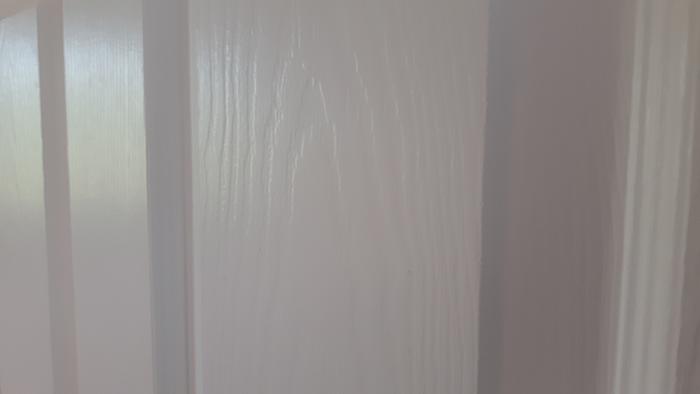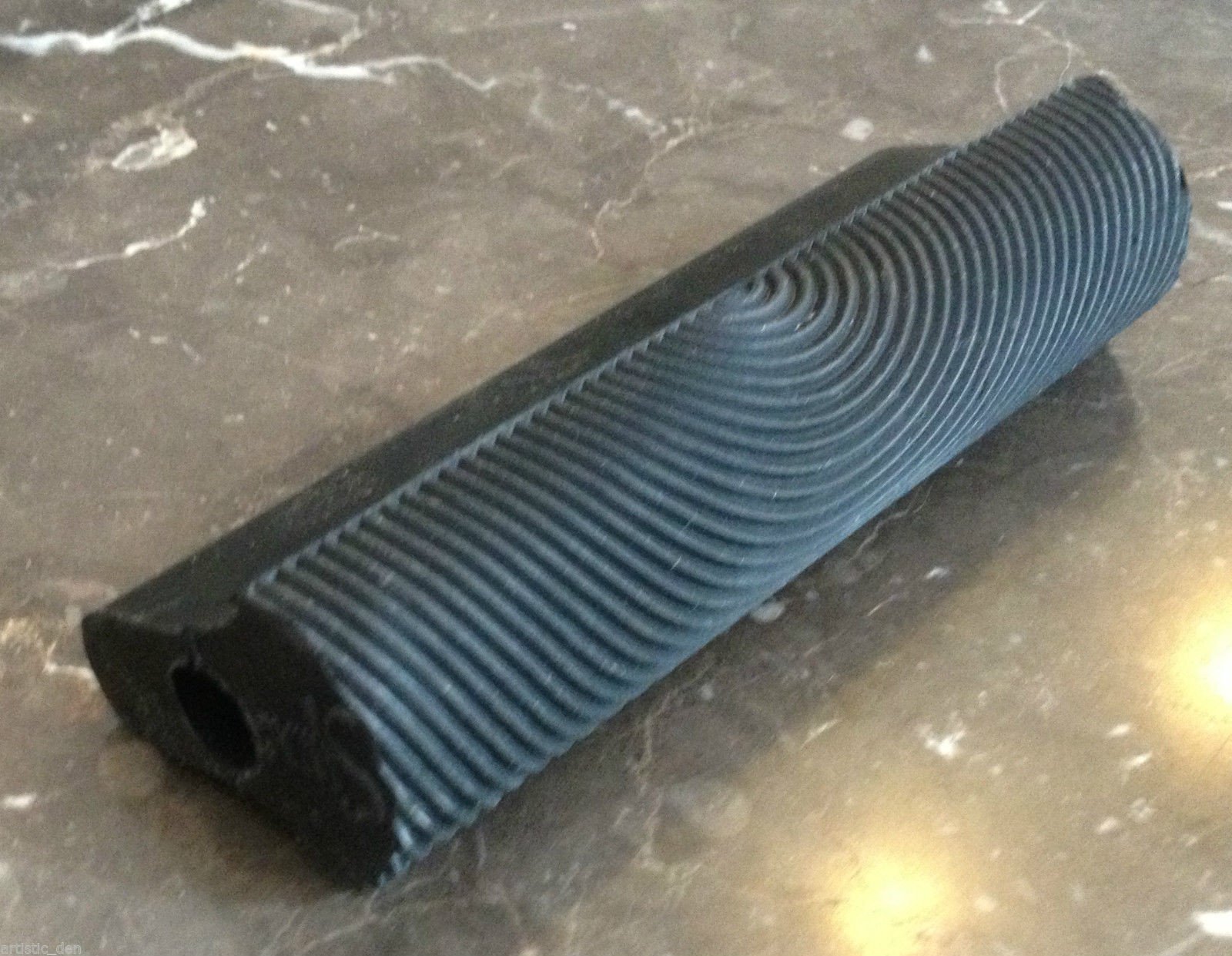That looks like a vinyl vrap, rather than a laminate or veneer - would that be right BM?
---
There are other versions of those graining tools, which are all basically rollers that you slide along and only rotate _very_ slowly. I have had good results with these in the past:
(they are about 4" long) but the process is rather lengthy, and you absolutely must de-nib and flat off between coats, and get exactly the right amount of paint on to avoid it looking like thick paint (rather than wood grain showing through from underneath). You also need to clean up the roller immediately after use - any dried paint on it ruins the effect next time.
I did white over grey undercoat which worked nicely. I found the finer pattern to be a lot more useful than the coarse one. I found the "notched-scraper" type to be almost useless, or at least a very unconvincing wood effect.
I'm not convinced you need to thicken the paint beyond what usually comes out of the tin, but I have only done one big project that way. If you do go that route, bear in mind that the deeper the "relief" of the pattern, the more fragile it is. I tried to be clever - my project was a "beach hut" themed bathroom - I used polyurethane varnish on the bath surround to try to protect it. This has worked, but it also tinted the surround slightly yellow, which doesn't match well.
Probably not what you need anyway, but it might be.
E.
PS: the image came from this site, which has some more examples - as I said, I found the comb type almost useless, and the other issue is graining panels in frames - you cannot easily get into corners with the roller type.
https://www.artisticden.com.au/products/wood-graining-tool-professional-wood-graining-tools-wood-grainers-wood-grain (Yes I know it's Australian, but they are sold in the UK too - couldn't find a reseller over breakfast!).


































